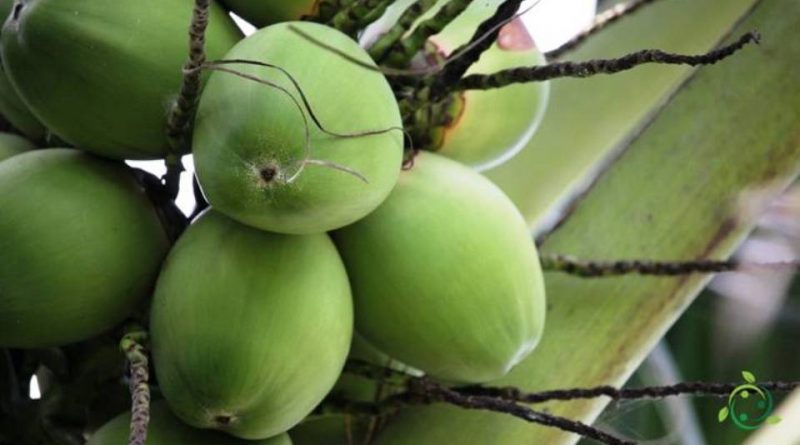How the coconut palm propagates
How the coconut palm propagates
The coconut palm (Cocos nucifera L., 1753) is a plant of the Arecaceae family native to the tropical areas of Southeast Asia located in the Pacific Ocean such as the Philippines and in the coastal areas of India.
This species has over 80 varieties that are basically divided into two large categories, rather homogeneous in characteristics: the tall and the dwarf. This division is not rigid and there are varieties that do not fall into either category.
Tall varieties are generally allogamous, while dwarf varieties are self-targeting.
Coconut palm propagation –
For the multiplication of this palm it is necessary to obtain a coconut that is still complete, that is, still wrapped in the semi-woody rind which, instead, is removed to consume these fruits.
The walnut must then be buried for half or a third of its volume in a very well drained soil, containing a good percentage of sand and coarse material.
Germination occurs with the production of an austorium that develops inside the seed forming a fleshy tissue called pommel, and on the opposite side the cotyledon is formed that comes out of the shell from one of the pores (eyes), giving rise to the bud from which the stem develops with leaves and roots.
Given the premises it is therefore advisable to procure a coconut that has already germinated as, as mentioned, the walnuts on the market are not intact and therefore now sterile.
For optimal germination and rooting, the ideal temperature must be around 26/28 ° C; for this reason, above all, far from its habitat, the best time to practice this operation is the summer.
During the germination phase the substrate must be kept constantly humid and the emission of new shoots should appear after about 3 months.
In temperate areas, outside its range, the coconut palm, in order to germinate and vegetate well, needs a protected environment with a constant temperature and, if necessary, with the help of suitable lamps or heating systems to maintain the ideal temperature.
Once germinated and well rooted, the coconut palm should be planted in a light, soft and well drained soil; this is to ensure the plant a good degree of humidity while avoiding persistent water stagnation, which could cause dangerous rot. Furthermore, it should be noted that the coconut palm does not like calcareous soils, but prefers those with a good percentage of peat.
If you decide to cultivate (for ornamental purposes) this plant in pot, it must be done in large and deep pots and it is good to intervene with repotting periodically, in the spring, using a compound formed by peat, sand, soil, lapilli or crushed stone and humus.
In reference to possible adversities, it is emphasized that coconuts are hardly affected by parasites or diseases, except for some scale insects, but in rare cases.
Due to the climatic characteristics of the Mediterranean, it becomes difficult to cultivate the coconut palm for productive purposes.
Coconuts, on the other hand, represent, in the areas of origin, one of the main sources of income for producing countries as they produce an infinite number of products used and appreciated also in Western countries.
However, other parts of the plant are also used, such as the leaves, with which baskets, roof coverings, etc. are made. or the terminal buds of the now adult plant which constitute an excellent cabbage-palm, or the sugary sap that is made to gush with appropriate cuts from some inflorescences and from which an alcoholic drink known as Toddy or palm wine is obtained.
The coconut is used in its entirety, as a fruit or in its parts: the fibers of the mesocarp, the milk, the almond or pulp, the shell. From the pulp, rich in fat, coconut oil is extracted, used in the food and soap industry.

